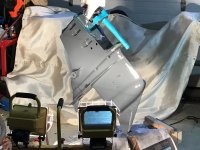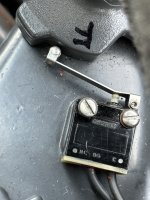I have owned this boat and OMC motor drive system since new. The model is 58FAVRJVN serial T01255989. I find it more difficult to adjust the interrupters and cables to retain easy shift changes. I am considering information from https://www.marinepartsexpress.com/PDF/volvo/SX_Cobra.pdf. This deals with conversion to Volvo SX Or possibility DP R? It looks reasonably straightforward. I understand the purchase of a motor mounted water pump is required, is that available? My engine/drive is pristine and has about 475 hours. I’ve done my own maintenance.
I would like to make the shifting much easier and understand the cone drive system by Volvo will accomplish this? Although it is a consideration, the motor electronic control module is not available anymore, I am banking on the EMC to be reliable so changing the engine is not likely an option given its low hours in top condition?? Can you advise me on the feasibility of conversion, cautions and material costs. Is it better to locate a USED Volvo compatible drive and a new “helmet” for drive fit up to OMC transom? Hope some can help —- Rhc
I would like to make the shifting much easier and understand the cone drive system by Volvo will accomplish this? Although it is a consideration, the motor electronic control module is not available anymore, I am banking on the EMC to be reliable so changing the engine is not likely an option given its low hours in top condition?? Can you advise me on the feasibility of conversion, cautions and material costs. Is it better to locate a USED Volvo compatible drive and a new “helmet” for drive fit up to OMC transom? Hope some can help —- Rhc





















